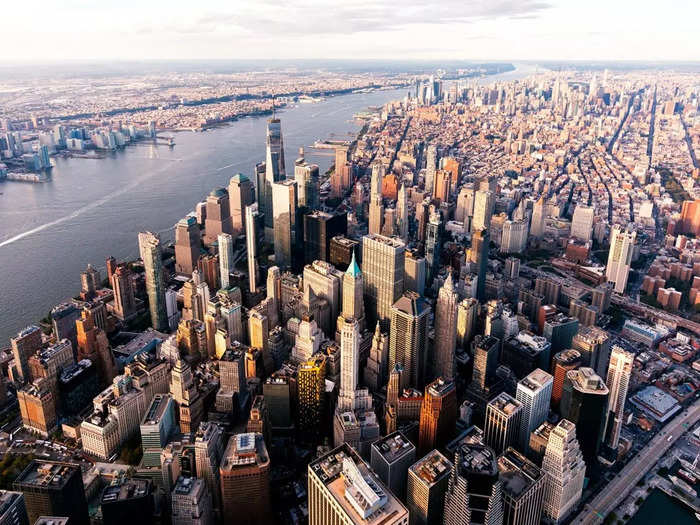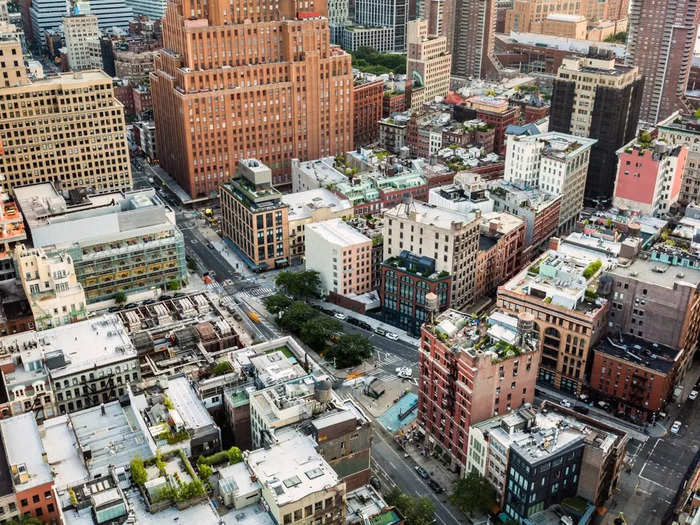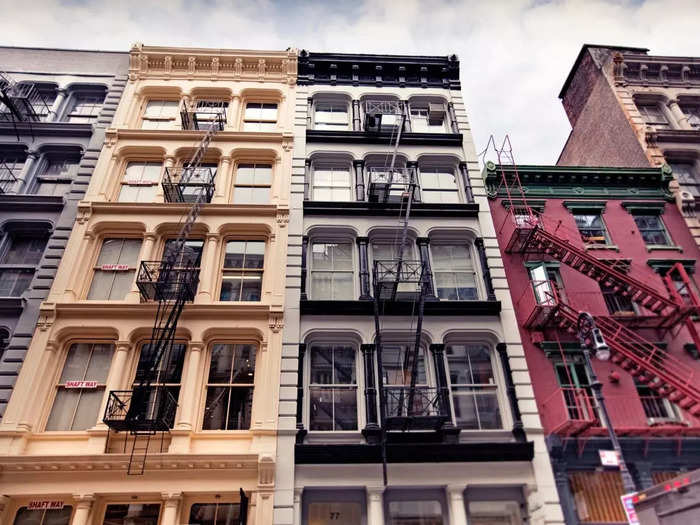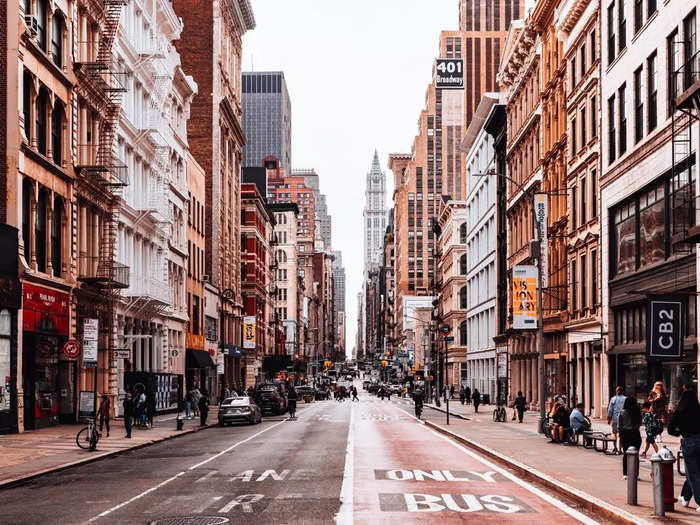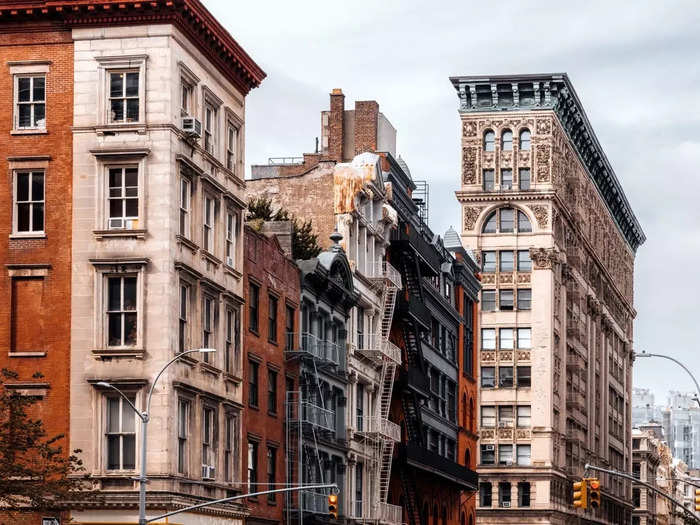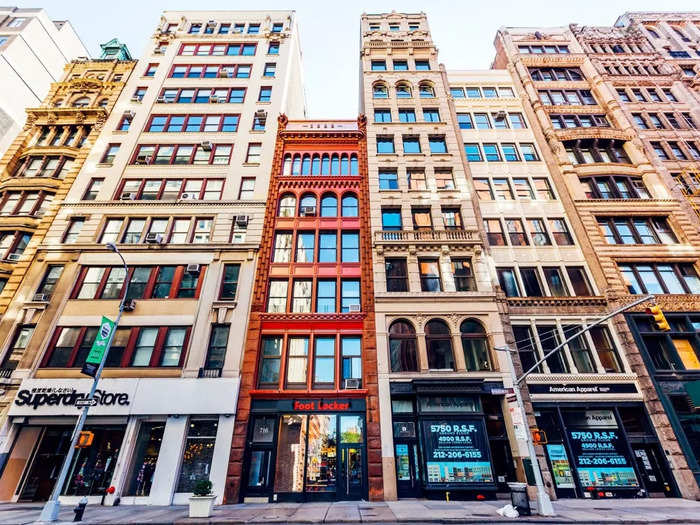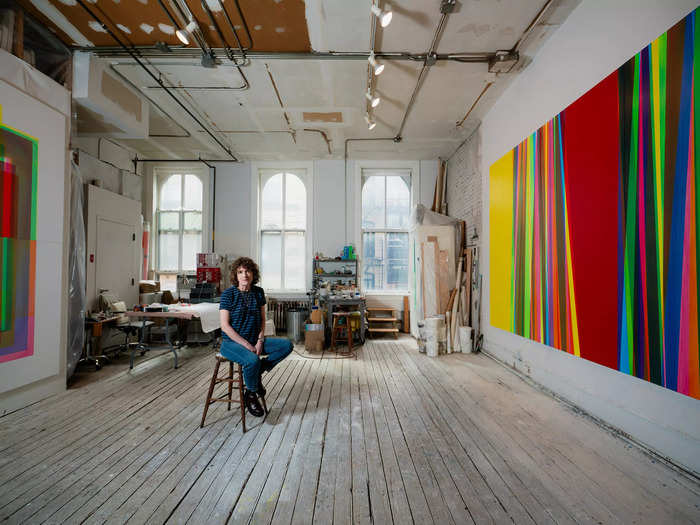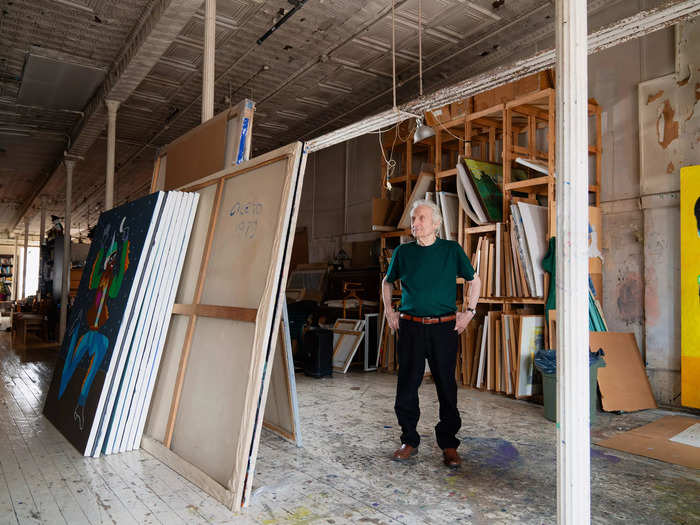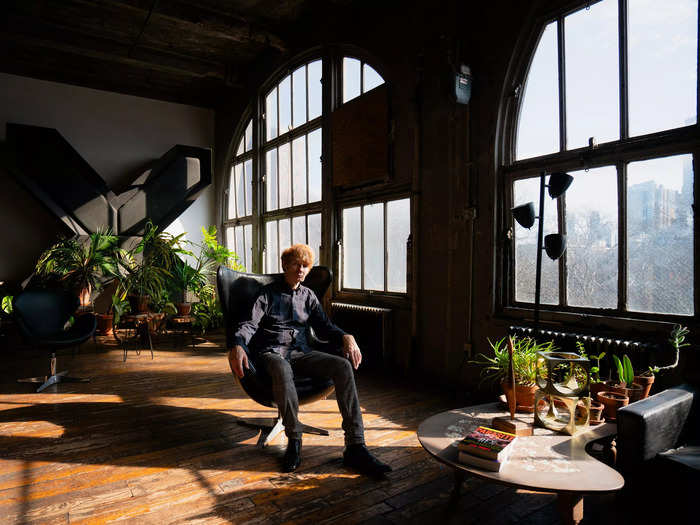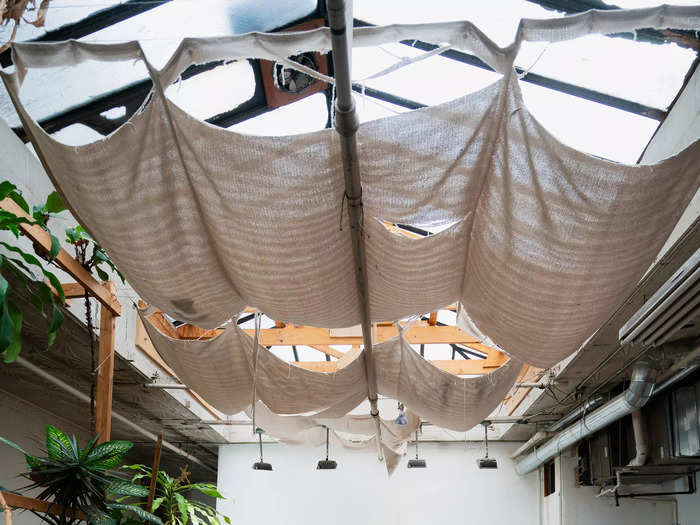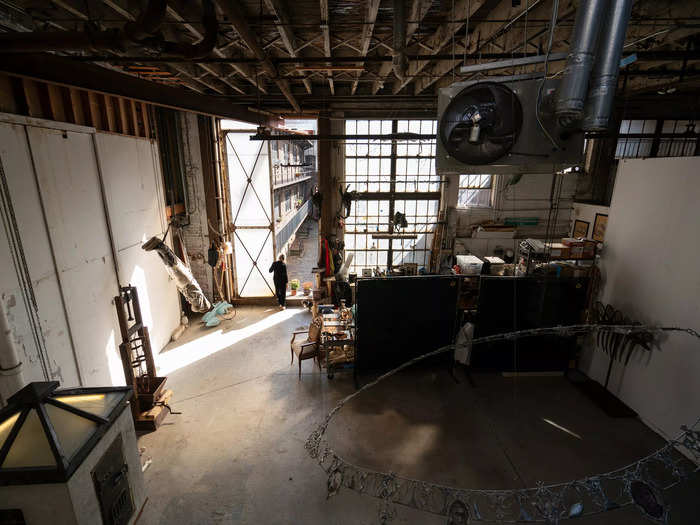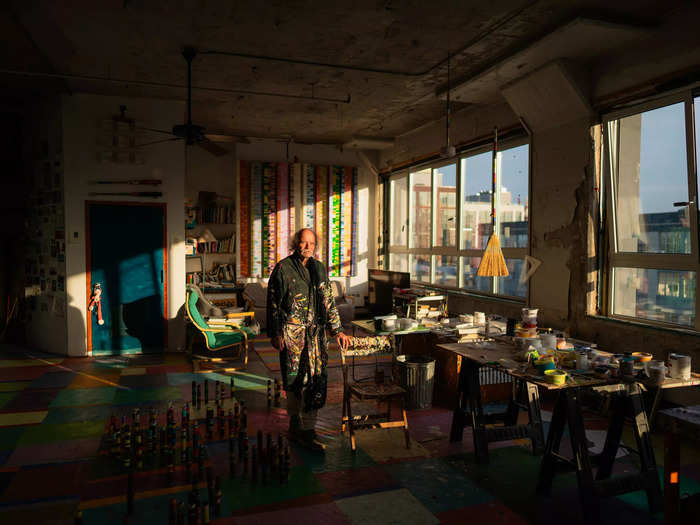Betsy Kaufman.Courtesy of Joshua Charow
- In a new book, photographer Joshua Charow documents the rich history of New York City's artist lofts.
- Protected by the Loft Law, a generation of artists were able to preserve their live-work spaces.
When he was a teenager, photographer Joshua Charow would sneak into buildings around New York City in search of the perfect rooftop shot. One factory in Brooklyn's South Williamsburg held his fascination as he discovered the raw, eclectic live-work spaces of artist's lofts.
In his early 20s, Charow returned to the building hoping to live there himself. He soon discovered he was "ten years too late" — all the lofts were taken by tenants living under New York City's historic Loft Law, protections for loft tenants passed in the early 1980s.
In a city where 115-square-feet can now go for $1,200 per month and the average rent continues to soar, the romantic notion of a massive, affordable loft seems nearly impossible to imagine.
Fascinated by the Loft Law's history and its impact on New York City's culture and legacy, Charow mapped out every building that fell under this protection and set out to document the residents who are still benefiting from the law.
Over two years, he photographed 75 tenants and collected their stories into "Loft Law, The Last of New York City's Original Artist Lofts," now available from Damiani Books.
Here's more on Charow's research of the Loft Law and a look at six of the subjects he covers in his book.
In the late 19th century and early 20th century, downtown New York City was a hub of manufacturing.
Lower Manhattan was once an industrial hub. Alexander Spatari/Getty
Cast-iron buildings with floor-through workrooms and ground-level shops populated the neighborhoods of Lower Manhattan, writes Charow.
When manufacturing moved out of American cities in the 1950's, many of these buildings were abandoned.
Manhattan's Tribeca neighborhood, where many lofts are located. Mihai Andritoiu/Getty
Slated only for commercial use that no longer existed, New York City officials largely left these buildings untouched without a plan for their future, according to Charow.
However, many artists struck deals with landlords who looked the other way and allowed them to live there for cheap.
The raw interiors of an industrial loft made for a perfect studio space. Orbon Alija/Getty
Landlords were happy to find any income for the spaces they chalked up to be practically worthless, Charow explains.
Some lofts didn't have electricity, heat, or a working kitchen, but artists loved the cheap rent and plentiful space to have both a home and studio.
A view of neighborhood containing cast-iron structures in New York. Alexander Spatari/Getty
Artists taking over factories, warehouse, and even theaters "transformed formerly derelict neighborhoods into the cultural epicenter of the world," writes Charow.
As loft living became fashionable, many landlords tried to evict the artists who made the lofts hospitable, Charow explains.
Many people wanted to imitate the loft lifestyle, writes Charow. Alexander Spatari/Getty
A group of artists formed the organization Lower Manhattan Loft Tenants in 1979 and lobbied politicians, arguing their essential cultural role in the city. They won.
The Loft Law passed in 1982, creating eviction protections and rent stabilization for those who could prove they lived in a commercial space with the landlord’s consent before 1982, according to Charow.
Today, the lofts exist among some of the most expensive real estate in the city. Alexander Spatari/Getty
"If you're lucky enough to walk into one of their studios, you will be transported back to the year they moved in, to a New York that doesn't exist anymore," writes Charow.
Betsy Kaufman, Tribeca
Betsy Kaufman. Courtesy of Joshua Charow
Painter Betsy Kaufman's original rent in 1979 for a different Tribeca loft was $450. In 1981, she moved into the space she still resides in today. Kaufman keeps her living space in the back of the apartment and uses the space near the soaring windows for her work, according to Charow.
"I think it's a lot of painters' dream to live and to have longevity as an artist," she told Charow about her life in the loft.
Carmen Cicero, The Bowery
Carmen Cicero Courtesy of Joshua Charow
The Bowery, a downtown neighborhood in Manhattan, has one of the highest concentrations of Loft Law-protected buildings in the city, according to Charow.
The 97-year-old painter Carmen Cicero lives in a fourth-floor walkup in the neighborhood where for the past four decades he's been able to hone his craft.
His works are now in the permanent collections of the Whitney Museum of American Art, the Smithsonian Art Institute, and the Museum of Modern Art.
But when he first moved into his loft in 1971, the space, he told Charow, was a "flophouse" with separate rooms divided by chicken wire.
"Oh my God, it was just a horror," he told Charow. "There were no shades. I said, well, people are looking in, and I hate that. I didn't want to take my clothes off."
JG Thirlwell, Dumbo
JG Thirwell Courtesy of Joshua Charow
JG Thirlwell is a musician who once performed in the experimental and punk scenes, and now mixes classical music and jazz, as well as scores film and TV. He moved into his Brooklyn loft in 1987 and created a home studio among the arched windows and 14-foot ceilings.
"Loft living is not for everyone." Thirlwell told Charow. "There's not adequate heat, and it's not like you can call up the super because there is no super. You're responsible for everything in here, and not everyone wants a life like that."
Kimiko Fujimura, Chinatown
Kimiko Fujimura Courtesy of Joshua Charow
Painter Kimiko Fujimura moved from Tokyo to New York over 50 years ago. In the first SoHo loft she occupied in the city, a fire broke out destroying more than a hundred of her paintings, Charow said.
Now, she lives on the top floor of a former bow and ribbon factory in Manhattan's Chinatown neighborhood, where she's been since 1979. She has created murals for the World Trade Center, Roseland Ballroom, and a Louis Vuitton store in Tokyo.
Marsha Pels, Greenpoint
Marsha Pels Courtesy of Joshua Charow
Sculptor Marsha Pels lives in a glass factory built in 1852 that sold items to Mary Todd Lincoln for the White House, according to Charow.
A massive 20-foot door and two hoists let Pels move her giant sculptures in and out of the building and around the studio.
She told Charow she's lived in lofts throughout the city including the East Village and SoHo neighborhoods of Manhattan, and Red Hook and Greenpoint neighborhoods of Brooklyn.
Steve Silver, Williamsburg
Steve Silver Courtesy of Joshua Charow
The Bronx-born painter Steve Silver has lived in a 5,000 square foot Williamsburg loft since 1979, where just one of his paintings that is made up of 112 pieces is mounted on a massive 12x16 foot wall.
His building has begun to attract much wealthier tenants. A loft half the size of his home below him rents for $11,000 per month, writes Charow.

